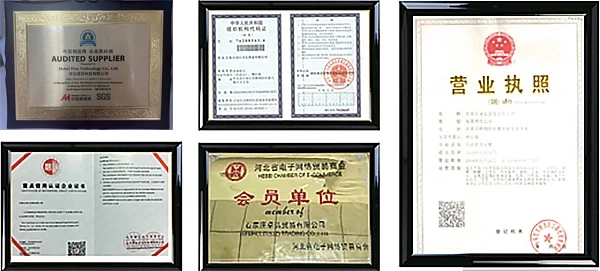



chemical neutralization in wastewater treatment
Chemical Neutralization in Wastewater Treatment
Wastewater treatment is a vital process in safeguarding public health and protecting the environment. Among various treatment methods, chemical neutralization plays a crucial role in managing wastewater's pH levels, which is essential for minimizing the toxic effects of acids and bases in effluent streams.
Chemical neutralization involves the addition of chemicals to wastewater to adjust its pH towards a neutral level, typically around 7. The primary aim is to mitigate the harmful effects of acidic or alkaline pollutants, which can adversely impact aquatic ecosystems and human health if released untreated into the environment. Typical sources of acidic wastewater include industrial discharges from manufacturing processes, while alkaline wastewater may result from activities such as cleaning operations or chemical production.
One of the common chemicals used for neutralizing acidic wastewater is sodium hydroxide (NaOH), commonly known as caustic soda. Conversely, sulfuric acid (H₂SO₄) or hydrochloric acid (HCl) can be used to treat alkaline wastewater. The selection of neutralizing agents depends on the specific characteristics of the wastewater being treated and the desired pH level.
The neutralization process typically involves adding the neutralizing agent to the wastewater stream and thoroughly mixing it to ensure an even distribution. This can be accomplished through various methods, including mechanical mixers or static mixers. The efficiency of the neutralization process is monitored by using pH meters and indicators to ensure that the pH reaches the desired level.
chemical neutralization in wastewater treatment

Properly executed chemical neutralization offers several benefits. First, it helps to comply with regulatory standards regarding wastewater discharge. Many regions have strict guidelines that limit the pH of discharged water to prevent damage to aquatic life. Second, by neutralizing extreme pH levels, the process prevents potential corrosion of pipes and equipment in wastewater treatment facilities, thus extending their operational life and reducing maintenance costs.
Moreover, chemical neutralization contributes to the overall treatment process. Neutralizing agents help facilitate subsequent treatment steps, such as biological treatment processes, by creating a more favorable environment for microorganisms that degrade organic matter. This synergy enhances the overall efficiency of wastewater treatment and leads to high-quality effluent suitable for discharge or reuse.
However, chemical neutralization also presents challenges. The requirement for chemical handling and dosing systems necessitates careful management to prevent over- or under-dosing, which could lead to further environmental concerns. Additionally, the handling of large quantities of chemicals requires strict safety protocols to protect workers and facilities.
In conclusion, chemical neutralization is an essential component of modern wastewater treatment processes. By effectively managing pH levels, it ensures the protection of both environmental and human health while complying with regulatory standards. As technology advances, the integration of automated systems and real-time monitoring of pH levels will enhance the precision and efficiency of neutralization, paving the way for more sustainable wastewater treatment practices.
-
Why Sodium Persulfate Is Everywhere NowNewsJul.07,2025
-
Why Polyacrylamide Is in High DemandNewsJul.07,2025
-
Understanding Paint Chemicals and Their ApplicationsNewsJul.07,2025
-
Smart Use Of Mining ChemicalsNewsJul.07,2025
-
Practical Uses of Potassium MonopersulfateNewsJul.07,2025
-
Agrochemicals In Real FarmingNewsJul.07,2025
-
Sodium Chlorite Hot UsesNewsJul.01,2025










